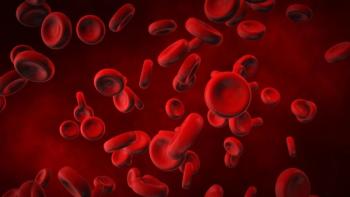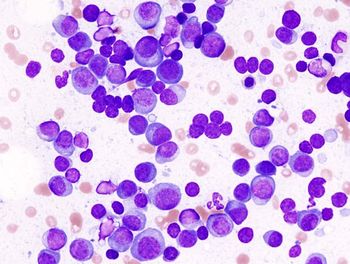
- ONCOLOGY Vol 13 No 5
- Volume 13
- Issue 5
Thymus May Hold Clue To Rebuilding Immune System After HIV
Discovery of a marker that allows tracking of thymus function also shows how the adult immune system might repair itself after being damaged by the human immunodeficiency virus (HIV), UT Southwestern Medical Center at Dallas scientists report
Discovery of a marker that allows tracking of thymus function also shows how the adult immune system might repair itself after being damaged by the human immunodeficiency virus (HIV), UT Southwestern Medical Center at Dallas scientists report in Nature.
The research shows that the thymus makes new T-cells throughout adulthood and that HIV may block their production, said Richard Koup, MD, chief of infectious diseases. The study, a collaboration including Koup; Daniel Douek, MD, a postdoctoral fellow in infectious diseases; and Louis Picker, MD, associate professor of pathology, also has important implications for people whose immune system has been damaged by cancer treatment.
For many years it was believed that the thymus only produced T-cells in people until about age 30 years, by which time it had slowly disappeared, replaced by fat. However, the investigators found that patients in their 30s whose HIV infection was treated with highly active antiretroviral therapy (HAART) produced new T-cells.
This is important because HIV patients, who have lower than normal numbers of T-cells, are highly vulnerable to other infections, as are cancer patients whose treatment has destroyed many of their T-cells.
T-cells can be increased by expanding the few old ones remaining after HIV infection or cancer treatment, or through production of new T-cells, said Koup, who holds the Jay P. Sanford Professorship in Infectious Diseases. If you expand the few surviving T-cells, you may not recover broad immunity to all infections. If T-cells programmed to fight certain infections have been destroyed, they can only be replaced by new T-cells produced by the thymus.
Therapeutic Implications
Using a marker for TCR-rearrangement excision circles, which are pieces of DNA produced during normal T-cell development in the thymus, the scientists were able to estimate the number of new T-cells produced by the thymus. The number of these cells in the blood indicates the level at which the thymus is functioning. The research showed that as HAART reduced the level of HIV, the number of new T-cells increased.
The data suggest that HIV specifically inhibits the thymus either by infecting the cells within the organ, or by affecting the ability of the thymus to produce T-cells by an unknown mechanism, Koup said. The investigators now will look for ways to stimulate the thymus, thereby speeding recovery of the immune system after HAART or cancer treatment. Now that we have a way to measure thymus output, we will be able to test therapies that will increase T-cell production, Koup continued.
The other researchers involved in the study are: Philip Keiser, MD, assistant professor of internal medicine; Richard McFarland, MD, pathology technical staff associate; Earl Gage, UT Southwestern medical student; and researchers from Duke University Medical Center, the National Institute of Allergy and Infectious Diseases, the University of Minnesota Medical School, Emory University School of Medicine, the University of Massachusetts Medical Center, and the UCLA School of Medicine and UCLA Institute. The National Institutes of Health and the Elizabeth Glaser Pediatric AIDS Foundation helped fund the work.
Articles in this issue
over 26 years ago
Photodynamic Therapy for Palliation of Locally Advanced Lung Cancerover 26 years ago
Reinventing Bone Marrow Transplantationover 26 years ago
Age Should Not Determine Treatment of SCLC Patientsover 26 years ago
Single Chest X-Ray Leads to Improved Lung Cancer Prognosisover 26 years ago
No Link Found Between PCB Exposure and Cancer MortalityNewsletter
Stay up to date on recent advances in the multidisciplinary approach to cancer.

















































































